Twelve amazing science stories we can’t wait to follow in 2016
- Share via
When it comes to incredible science, 2015 will be hard to top. Among a number of notable events, we got our first, thrilling look at Pluto, found evidence that liquid water still flows on Mars and began facing the reality that human gene editing is closer than ever thanks to the CRISPR system.
But 2016 is shaping up to be pretty intriguing too. From the first flight of a Kickstarter-funded spacecraft to an unprecedented look at the microscopic life on Earth, here are some of the science stories we’re looking forward to following in the new year. You can follow them with us at latimes.com/science.
Asteroid hunting
NASA’s ambitious mission to hunt down an asteroid, grab samples and return them to Earth is set to launch in September. OSIRIS-REx — short for Origins-Spectral Interpretation-Resource Identification-Security-Regolith Explorer — will examine the asteroid Bennu with a suite of instruments before extending a robotic arm toward the rocky body, using a puff of nitrogen to disturb its surface and gathering at least 2.1 ounces of the disturbed material. The spacecraft will have only three tries to get the maneuver right before it runs out of nitrogen. Asteroids are fossils from the solar system’s early days, and scientists hope Bennu’s samples will contain trapped water, organic material and other clues about how our system evolved.
“By visiting this asteroid, we're bringing back something that … will be a pristine sample of what's out there,” Michael Drake, the mission’s original principal investigator, told The Times a few months before he died in 2011. “It's a time capsule containing, probably, the building blocks of life.”

This illustration depicts NASA’s OSIRIS-REx spacecraft preparing to take a sample from asteroid Bennu. The craft will launch in 2016 and return its samples to earth in 2023.
This illustration depicts NASA's OSIRIS-REx spacecraft preparing to take a sample from the asteroid Bennu. The craft is scheduled to launch in 2016 and return its samples to earth in 2023. (NASA / Goddard Space Flight Center)
OSIRIS-REx is scheduled to approach Bennu in 2018, study it for almost a year, collect samples in 2019 and deliver them to the Utah desert in 2023.
--Amina Khan
Editing genes to cure disease
Scientists recently agreed that there are many safety and ethical issues to be resolved before anyone should use new techniques to “edit” the DNA of humans in ways that would be passed to future generations. But there's active research involving gene editing that would alter the function of defective genes in people suffering from certain inherited diseases. These changes would only affect the patient, not his or her descendants.
The coming year, for instance, will bring pre-clinical tests aimed at gauging the safety of a treatment for sickle cell disease.
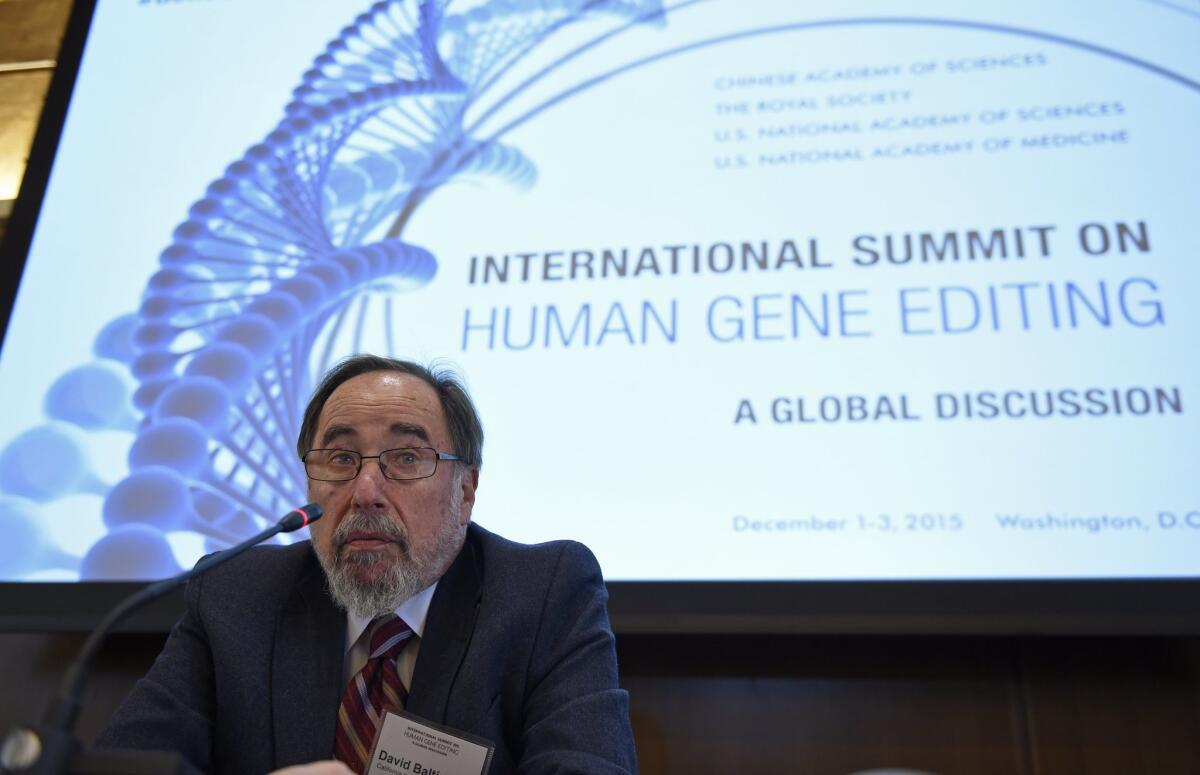
Nobel laureate David Baltimore of Caltech speaks at an international summit on the safety and ethics of human gene editing. Researchers are trying to use the technology to cure conditions like sickle cell disease.
Nobel laureate David Baltimore of Caltech speaks at an international summit on the safety and ethics of human gene editing. (Susan Walsh / Associated Press)
People with sickle cell disease have misshapen red blood cells that aren’t able to deliver adequate amounts of oxygen to tissues throughout the body. To fix this, scientists plan to take white blood cells from patients and use them to generate induced pluripotent stem cells. Then they will use the CRISPR-Cas9 gene-editing platform to replace the faulty beta globin gene in these stem cells before converting them into normal red blood cells. These healthy cells could then be transfused into patients.
--Melissa Healy
Biomedical research gets a welcome boost
After more than a decade of flat funding or outright budget cuts, the National Institutes of Health received a $2-billion budget increase in the 2016 fiscal year, bringing its projected spending for the year that began Oct. 1 to $32 billion.
That's seen as a sign of growing bipartisan support for more robust spending on biomedical research across a broad spectrum of studies. The money will be spent on studies such as cell biology and molecular immunology as well as social interventions that could prevent disease and promote healthy behaviors.
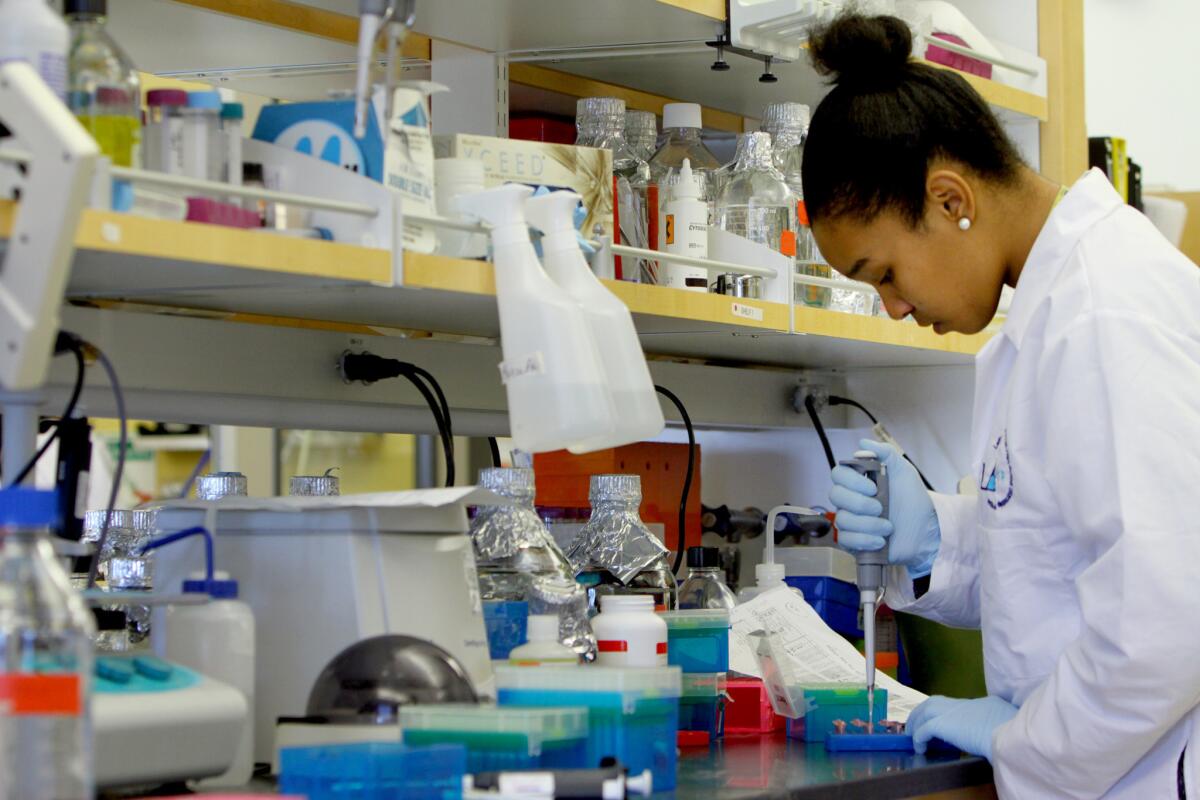
With a $2 billion boost to its annual budget, the National Institutes of Health will be able to fund more biomedical research in 2016.
With a $2-billion boost to its annual budget, the National Institutes of Health will be able to fund more biomedical research in 2016. (Francine Orr / Los Angeles Times)
Among the more ambitious efforts are projects to develop “organ-on-a-chip” systems. These systems layer living cells on top of microchips to serve as stand-ins for hearts, lungs or other organs. One day, these systems could reduce the need for animal testing.
--Melissa Healy
Mission to Mars
The bad news first: The March launch of NASA’s InSight mission to Mars, intended to study the interior structure of the Red Planet, has been suspended until 2018 due to a problem with a seismometer provided by partners from France.
Now for the good news: The European Space Agency’s 2016 ExoMars mission is still be on track for its March launch. The project will put a satellite into Martian orbit and send a spacecraft to the surface. The goal is to explore how much — if any — methane exists on Mars.
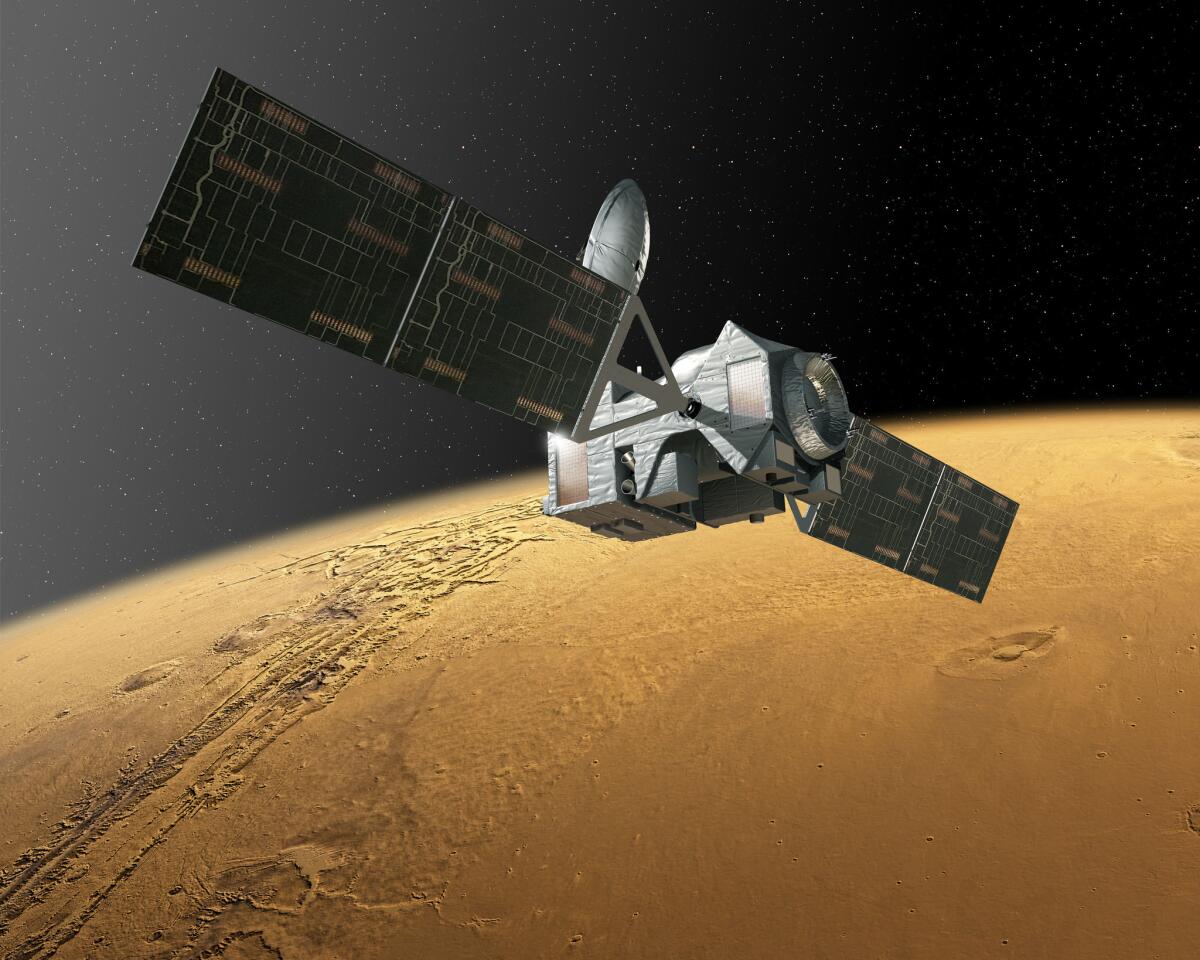
This ExoMars satellite will orbit the Red Planet and search for traces of methane, a gas that could provide clues about the story of life on Earth’s dry and dusty neighbor.
This ExoMars satellite will orbit the Red Planet and search for traces of methane, a gas that could provide clues about the story of life on Earth’s dry and dusty neighbor. (European Space Agency)
That’s a mystery that has proved difficult to solve, even with the array of orbiters and rovers NASA has deployed to the planet. Answering this contentious question is important: On Earth, most methane is produced by living things, and the chemical is a food source for some kinds of organisms. Thus, its presence in significant amounts on Mars could have implications for the likelihood of life on our dry, dusty neighbor.
--Amina Khan
First results from the Earth Microbiome Project
In 2016, an international team of 600 scientists is slated to release results from the largest survey of microbial life on the planet. The Earth Microbiome Project began in 2010 with the Herculean goal of sampling microbial communities from 200,000 locations around the globe and sequencing their DNA. The team is currently analyzing results from 50,000 locations, including deep sea volcanoes, birds’ nests, dolphin blowholes and the International Space Station.
Project co-founder Jack Gilbert, a microbial ecologist at the University of Chicago, compared the work to Darwin’s initial journey to the Galapagos. “Darwin went to South America to understand the breadth of biological diversity on this planet, but what he got out of that was a data set that let him test the theory of natural selection,” he said.
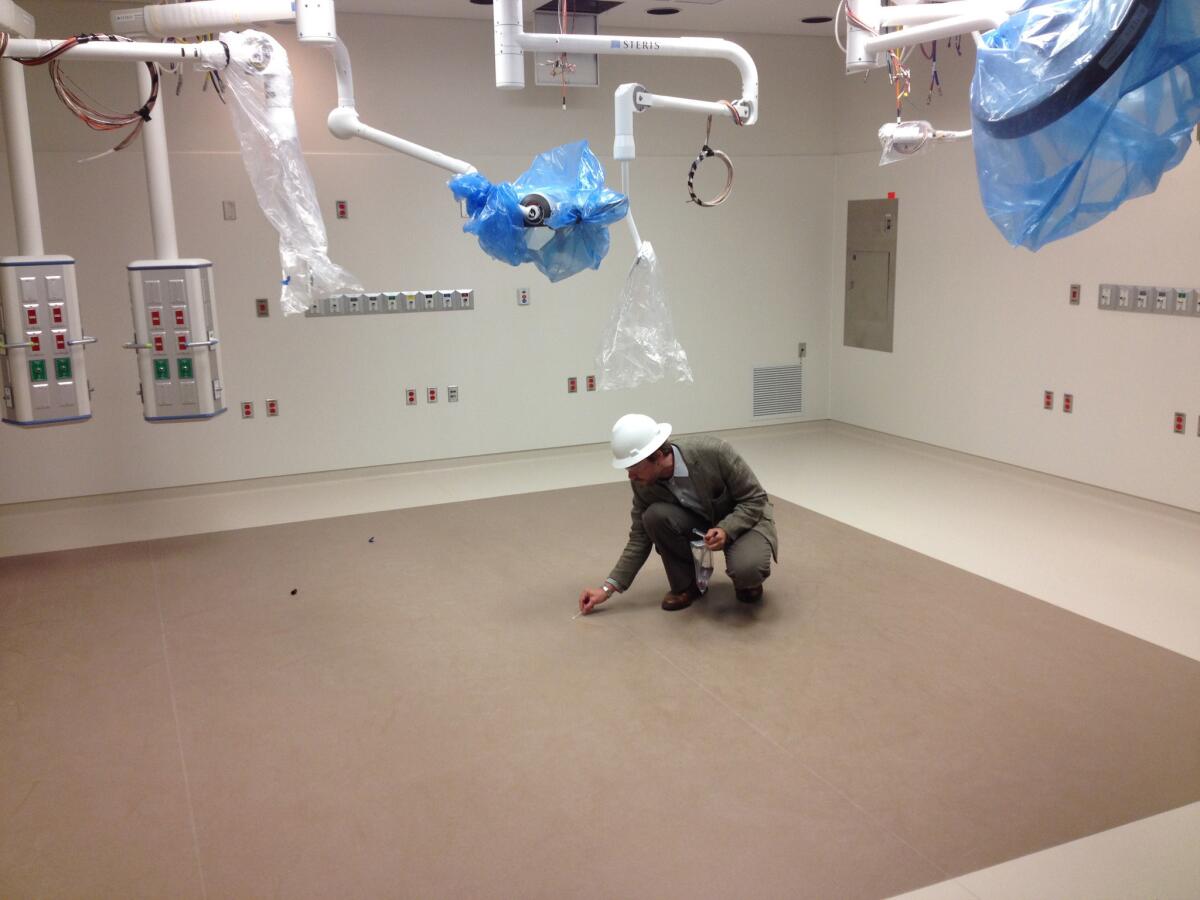
Hundreds of scientists around the world are sampling microbial life all over the planet. Above, project co-founder Jack Gilbert collects samples from a hospital. The first results of their effort, the Earth Microbiome Project, will be released in 2016.
Hundreds of scientists around the world are sampling microbial life all over the planet. Above, project co-founder Jack Gilbert collects samples from a hospital. (Jack Gilbert)
Gilbert said he is optimistic that by looking for patterns in the DNA of microbes around the globe, scientists will come up with new theories of how life functions on our planet. “Even your hand is a relatively unexplored microbial ecosystem,” he said. “The pen you use, or the keyboard you type on, could hold untold biological wonders.”
--Deborah Netburn
New advice on how to eat
It’s been five years since nutrition authorities last overhauled the nation’s food policy. But that is set to change in January, when the Department of Agriculture and the Department of Health and Human Services are expected to unveil their new dietary guidelines.
Early scientific input to the drafting process suggests that the new guidelines will give eggs, shellfish and other cholesterol-rich foods the all-clear. Experts say these foods can be a good source of nutrition and that eating them has little influence on cholesterol levels in the bloodstream. Coffee is also expected to get a thumbs-up in light of research that's suggests a few cups a day can help prevent such conditions as type-2 diabetes, depression and even Parkinson's disease.

Dietary Guidelines from the US Department of Agriculture and the Department of Health and Human Services are expected to give the all-clear to eggs and other cholesterol-rich foods.
New dietary guidelines from the Department of Agriculture and the Department of Health and Human Services are expected to give the all-clear to eggs and other cholesterol-rich foods. (Christina House / For The Times)
The scientists advising the government agencies noted that if Americans were to replace more meat and dairy with plant-based foods, they would improve the environment as well as their bodies. The new guidelines will help set nutritional standards for school lunches and other state and federal programs.
--Melissa Healy
Tracking El Niño like never before
The first hints that El Niño was brewing came in the early months of 2015. Now there’s no disputing it: The global weather pattern has officially begun, even if its effects are not expected to hit California until early 2016.
El Niño is caused by a periodic and natural warming of the Pacific Ocean around the equator, creating a huge upheaval of usual weather patterns throughout the planet. In parched California, El Niño is expected to deliver powerful rain and snow storms. However, in Indonesia and northern Australia, it’s the harbinger of crippling drought.
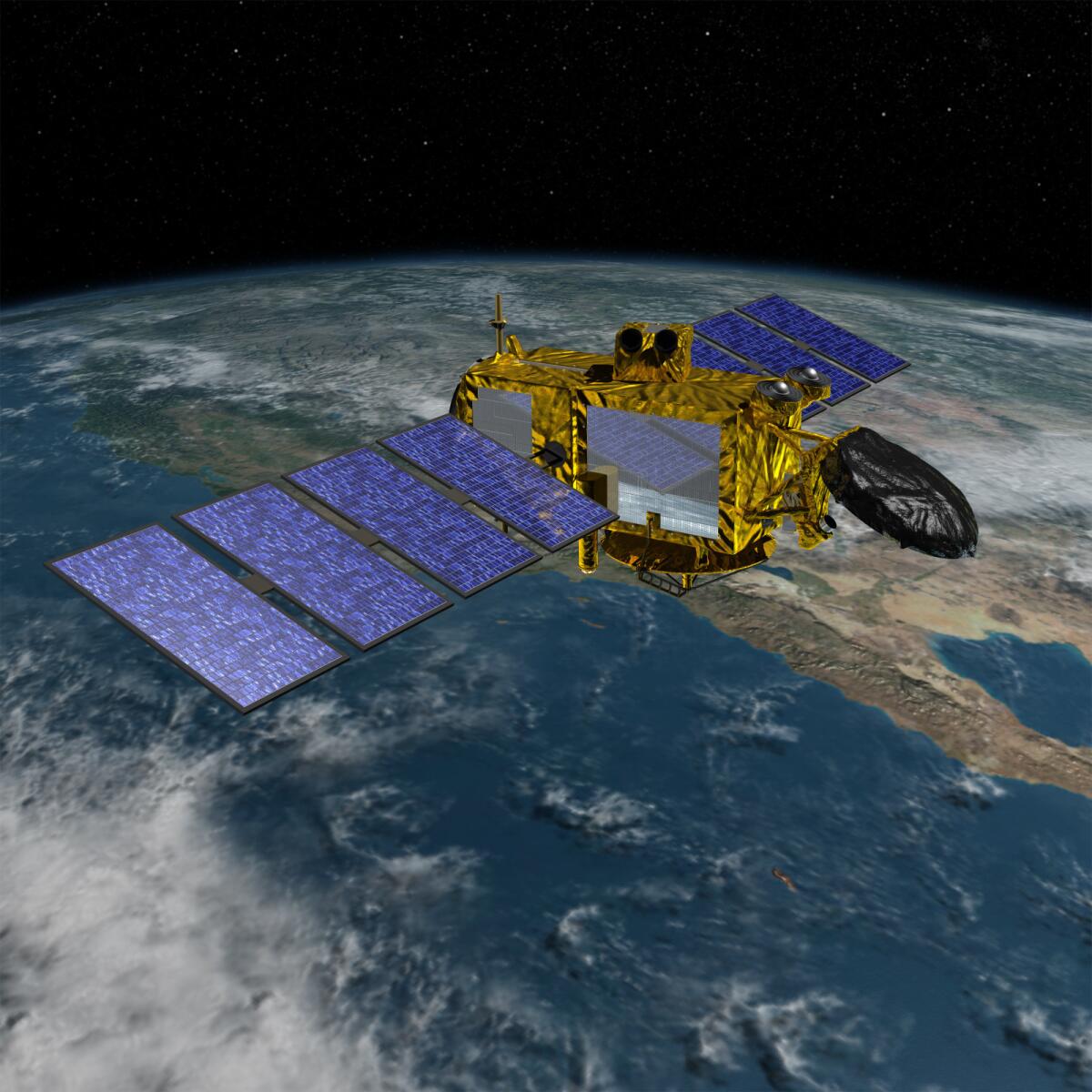
An artist’s concept of Jason-3 over the California coast. When it launches in 2016, the satellite will take unprecedented measurements of El Nino’s effects.
An artist’s concept of Jason-3 over the California coast. After it's scheduled launch in 2016, the satellite is to take unprecedented measurements of El Nino’s effects. (NASA / JPL-Caltech)
Now scientists hope to be better positioned than ever before to watch how El Niño plays out. The U.S.-European Jason-3 satellite is expected to launch in mid-January, allowing researchers to measure the height of the sea with an accuracy of about 1 inch. In addition, a vast network of buoys, floats and robotic ocean gliders with suites of sensors have been deployed throughout the world to allow scientists to closely monitor the ocean system.
“We expect to learn how the El Niño evolves in greater detail than we’ve ever seen before,” said Dan Cayan, a climate researcher at the Scripps Institution of Oceanography.
“With all this new data,” added Joshua Willis, NASA project scientist for Jason-3, “we’ll be studying this El Nino for years to come.”
--Deborah Netburn
NASA twin study enters new phase
This spring, U.S. astronaut Scott Kelly will depart the International Space Station after spending an entire year living in space. Meanwhile, his identical twin brother, retired astronaut Mark Kelly, will finish a year with his feet firmly on Earth.
The siblings are part of an unprecedented effort by NASA’s Human Research Program to probe the effects that long-distance interplanetary travel could have on the human body. Among the many factors to be studied in a series of 10 experiments: affects on the microbes in their guts, changes in their physiques and differences in their behavior.
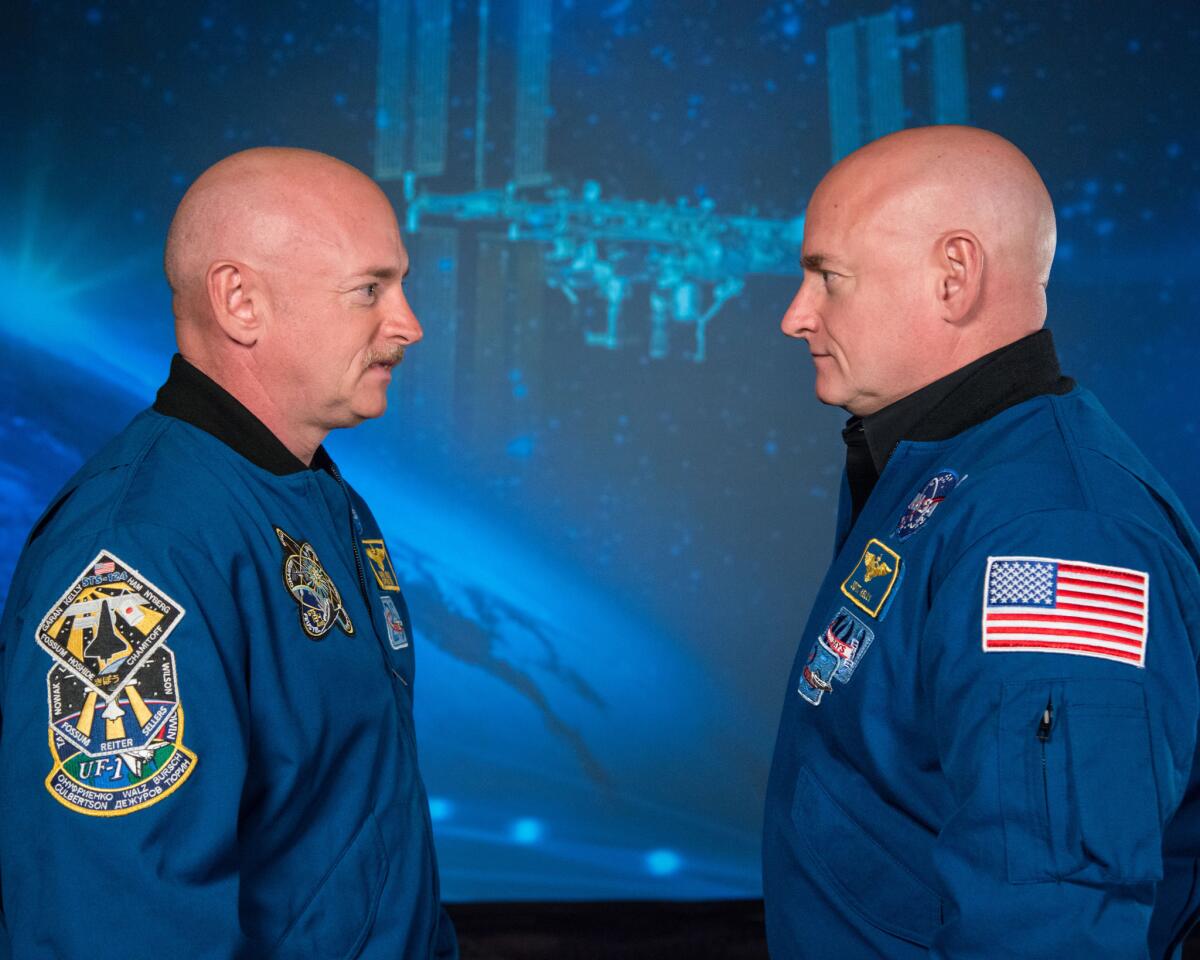
Identical twin astronauts Mark and Scott Kelly are taking part in an unusual experiment to study the health effects of living in space.
Identical twin astronauts Mark and Scott Kelly are taking part in an experiment to study the health effects of living in space. (NASA Human Research Program )
Distinctions between the two could offer invaluable insight into how humans will adapt to life in the harsh environs of space, if we are ever to colonize other planets or simply leave Earth on a more regular basis. The fact that the Kelly brothers share the same DNA will help scientists uncover subtle changes that may result from extended spaceflight.
--Amina Khan
Fighting allergies with immunotherapy
The new year may be the one in which the nearly 15 million Americans thought to have a food allergy see treatments emerge from years of promising clinical trials.
In January, an advisory panel to the Food and Drug Administration will meet to draft guidance on how the agency should evaluate the safety and effectiveness of immunotherapies for people with allergies to foods or airborne substances. That should clear the way for the FDA to consider approval to marketing new treatments.

In early 2016, a Food and Drug Administration advisory committee will take steps to clear the way for new allergy-fighting immunotherapies.
In early 2016, a Food and Drug Administration advisory committee may take steps to clear the way for new allergy-fighting immunotherapies. (Glenn Koenig / Los Angeles Times)
Many of those treatments explored to date expose patients to tiny but escalating doses of an allergen. Relief is sorely needed: One in 13 American children is thought to have an allergy to peanuts, tree nuts, milk, eggs, fish, shellfish, wheat or soy, and nearly 40% of these children have already experienced a severe or life-threatening reaction.
--Melissa Healy
First results from Alzheimer’s disease drug trials
In 2016, the oldest baby boomers will begin turning 70 — an age at which new diagnoses of Alzheimer's disease jump from less than 1% (among those ages 65 to 69) to 2.5% (among those 70 to 74). As this demographic bulge of 76.4 million Americans hits the age when a lost set of keys may be a grim harbinger of dementia, researchers are racing to develop medications that can alter the course of Alzheimer's.
In the new year, researchers expect to get preliminary results on a handful of therapies that target two of the disease’s hallmarks in the brain: amyloid plaques and neurofibrillary tangles made up of clumped tau proteins. By midyear, drugmaker Eli Lilly may have early findings on the effectiveness of solanezumab in lessening amyloid plaque build-up in those with very early Alzheimer's. Scientists also await clinical trial results of a drug called TRx-0327 — a variant of a malaria drug — that prevents tau tangles from forming in the brain.

A woman with Alzheimer's disease walks with a companion in a nursing home. (Matt Rourke / Associated Press)
Clinical findings on a former cancer drug that tamps down inflammation in the brain, another factor in Alzheimer's, are also expected in the new year.
--Melissa Healy
The citizen-funded LightSail sets sail
For centuries, scientists have envisioned a spacecraft that could be gently propelled by photons streaming off the sun, much like a sailboat on Earth is pushed by the wind. The idea originated with Johannes Kepler back in the 1600s. It was later championed by Carl Sagan and considered by NASA in the 1970s and ‘80s.
Now, thanks in part to funding from a successful Kickstarter campaign, the Planetary Society plans to demonstrate that controlled solar sailing is possible. In September, the society’s LightSail is scheduled to launch into Earth orbit, where it will use solar radiation pressure to enlarge its orbit by about half a mile per day.

The Planetary Society’s LightSail solar sailing spacecraft is scheduled to be ferried into Earth orbit in 2016. When its solar sails are unfurled, it may be visible to observers on the ground.
The Planetary Society’s LightSail solar sailing spacecraft is scheduled to be ferried into Earth orbit in 2016. When its solar sails are unfurled, it may be visible to observers on the ground. (Josh Spradling / The Planetary Society)
On its way into space, the LightSail will be tucked into a small container about the size of a loaf of bread. Once it escapes Earth’s atmosphere, it will unfurl to reveal a 344-square-foot piece of reflective aluminized Mylar, thinner than a piece of aluminum foil.
“It’s a cutting-edge mission that is funded and supported by citizens,” said David Spencer, an aerospace engineer at Georgia Institute of Technology and the project manager of LightSail. “The goal is to make it a useful technology. The payoff is an inexhaustible source of propulsion.”
--Deborah Netburn
HIV vaccine tests get underway in Africa
A pivotal clinical trial of a novel HIV vaccine regimen is expected to get underway in South Africa during 2016.
Some 252 HIV-free South Africans between the ages of 18 and 40 are to get the HVTN 100 experimental regimen, which has been adapted to the HIV subtype that predominates in southern Africa. The regimen includes two separate vaccines, plus booster shots after one year. Pre-clinical trials suggest that it may confer at least 50% protection against the acquisition of HIV.
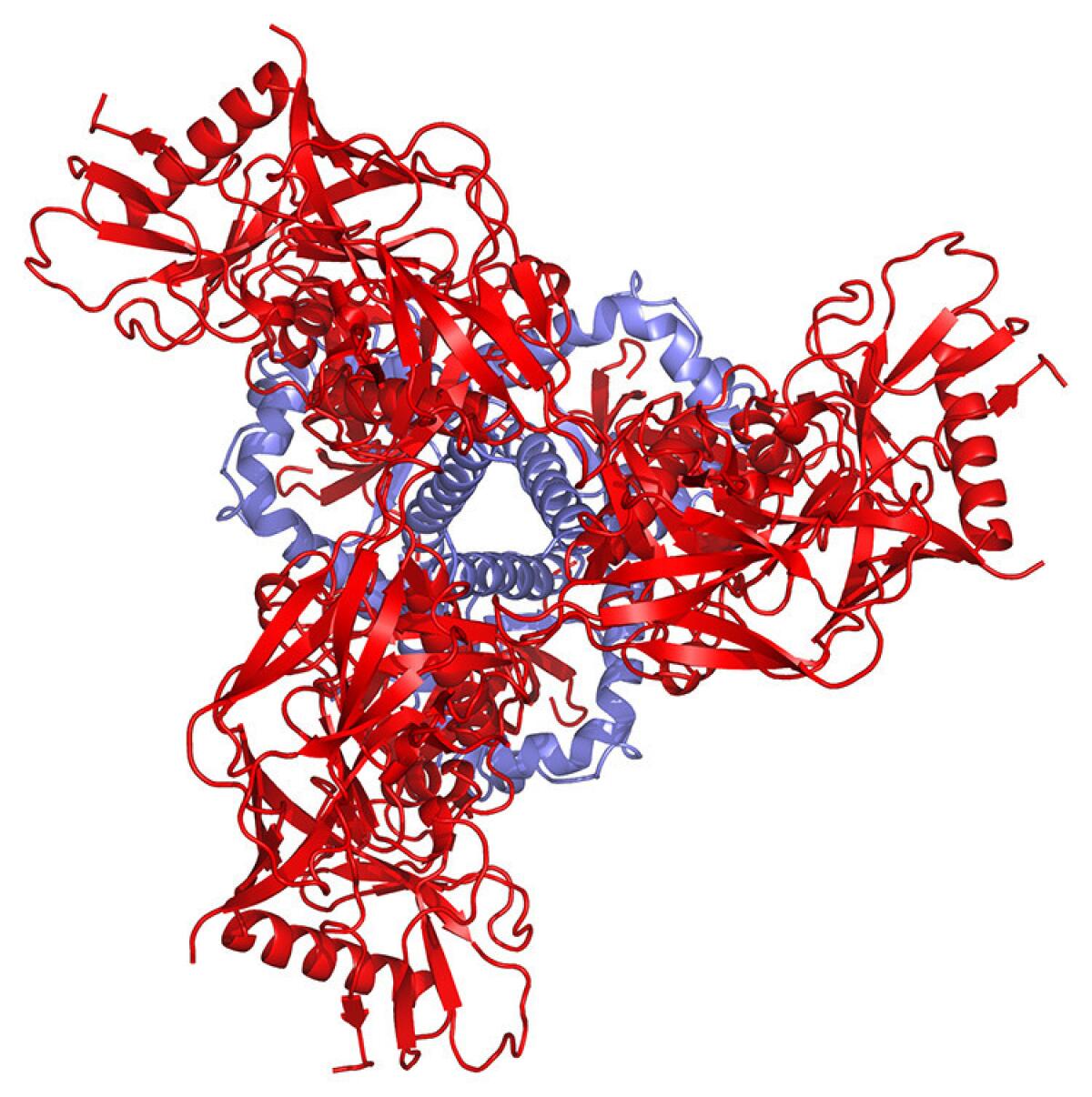
This schematic depicts the protein structure of the pre-fusion HIV spike as viewed from above. New insights into the structure of HIV’s protein spikes have raised hopes for a vaccine that can stop the virus that causes AIDS. A clinical trial of one vaccine candidate will begin in South Africa in 2016.
This schematic depicts the protein structure of the pre-fusion HIV spike as viewed from above. (National Institute of Allergy and Infectious Diseases)
The safety and immunogenicity findings generated from the HVTN 100 trial will help determine whether this vaccine regimen will be tested in a larger study in South Africa.
--Melissa Healy
"Like" Los Angeles Times Science & Health on Facebook






